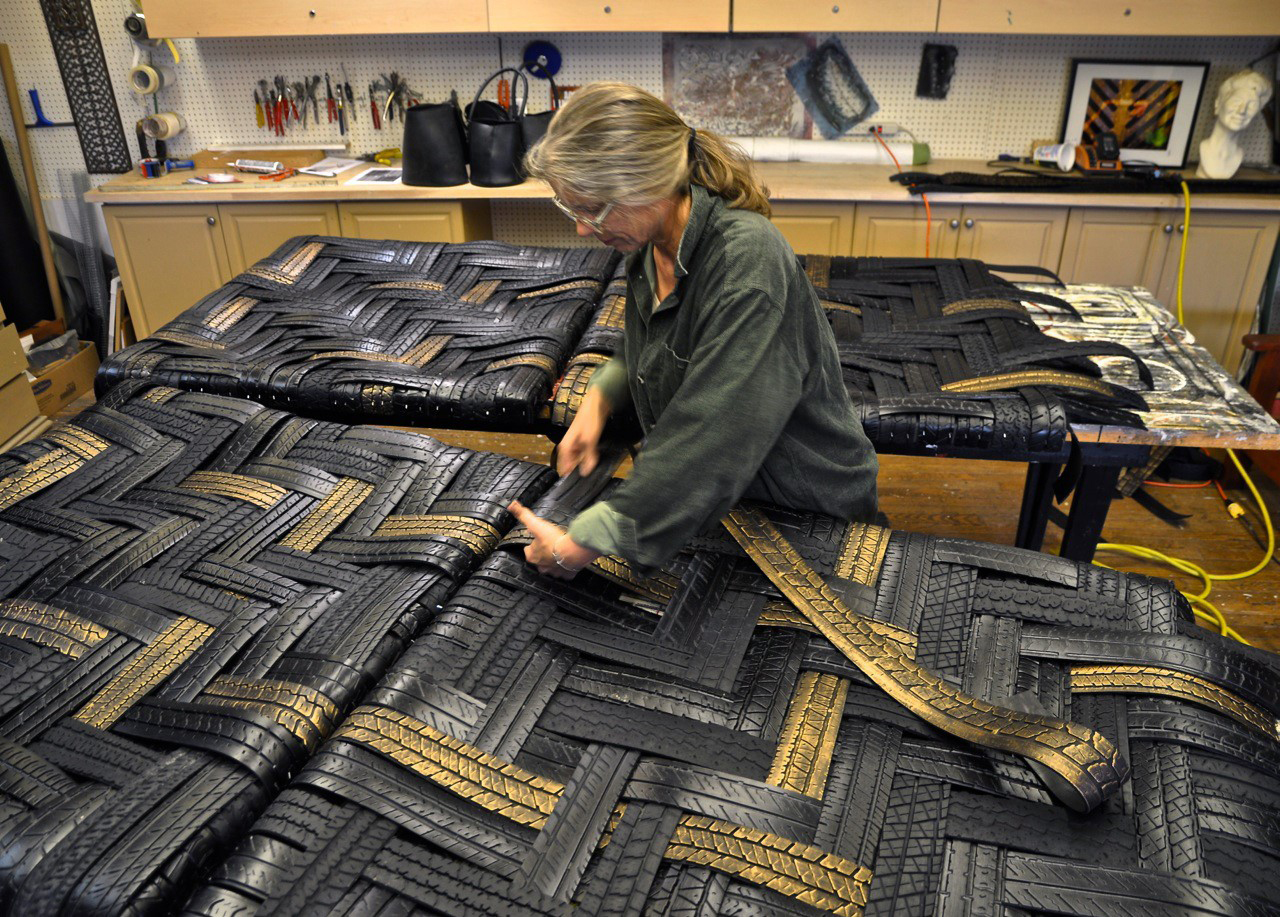Carolyn Butts, an art, and design visionary founded her eponymous company in 2005, alongside designer Hans Honegger. The pivotal moment for Butts’ journey occurred in 1989, following Canada’s infamous Hagersville tyre fire. The event left an indelible mark on Butts, who was profoundly affected by the sight of uncontrolled smoke billowing from 14 million burning tyres over a 17-day period. The environmental impact, particularly near the Six Nations Reserve, spurred Butts into action, igniting her passion for addressing waste management challenges through innovative design solutions. This profound experience served as the catalyst for Butts’ pioneering work in repurposing discarded materials, a journey that continues to evolve as she explored the inherent value of waste. Reflecting on her inspiration, Butts recalls that around the time of the fire, she had purchased a used car and discovered the tyres needed changing. After replacing them, she found herself compelled to research the properties of rubber material to explore its potential as a design medium.

“It is imperative that we transition towards closed-loop manufacturing, from extraction to disposal. This represents an existential challenge and the design imperative of our time”
Today, Carolyn meticulously sources specific tyres from repair garages and landfills, transforming them into art and design pieces after thorough cleaning and cutting. Initially, she attempted to cut through the steel belts using a jigsaw but later discovered bias ply tyres, which utilise woven nylon instead of steel. This discovery made it easier to cut the tyres with a utility knife, while also reducing the release of caustic smoke into the air. The labour-intensive process of cutting tyres into pieces is primarily carried out by hand, with an emphasis on minimising energy consumption. Carolyn’s early years were characterised by experimentation with paints and stains that adhese to rubber surfaces. She explains that the paint coating serves a dual purpose: it encapsulates the item, reducing potential rubber odour, and gives it the appearance of leather, wood, or ceramics. Striving to incorporate as many recycled materials as possible, Carolyn utilises various car parts, used mirrors, and window frames in her designs. Paint and other hardware, such as wire, screws, and bolts, are procured new. Her designs often evoke astonishment, with many finding it hard to believe they are crafted from used tyres. While the aesthetic of tyres may present a challenge for some, Carolyn views her designs as a harbinger of a future where manufacturing with waste products becomes commonplace.